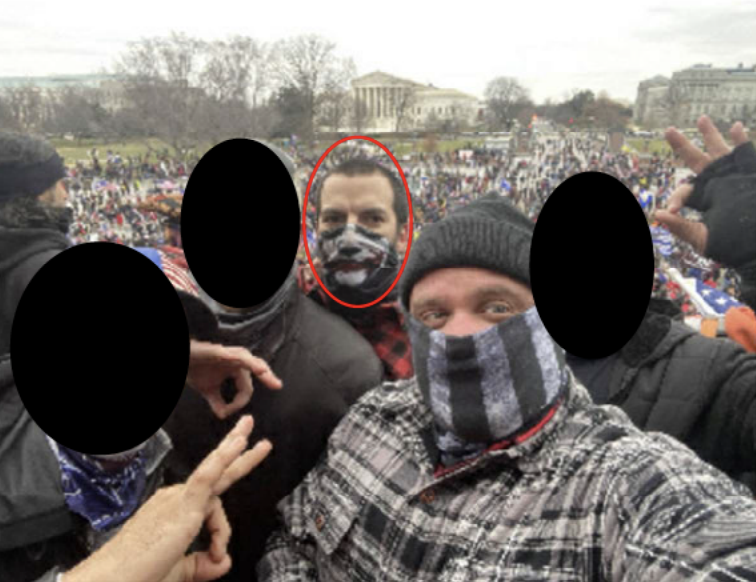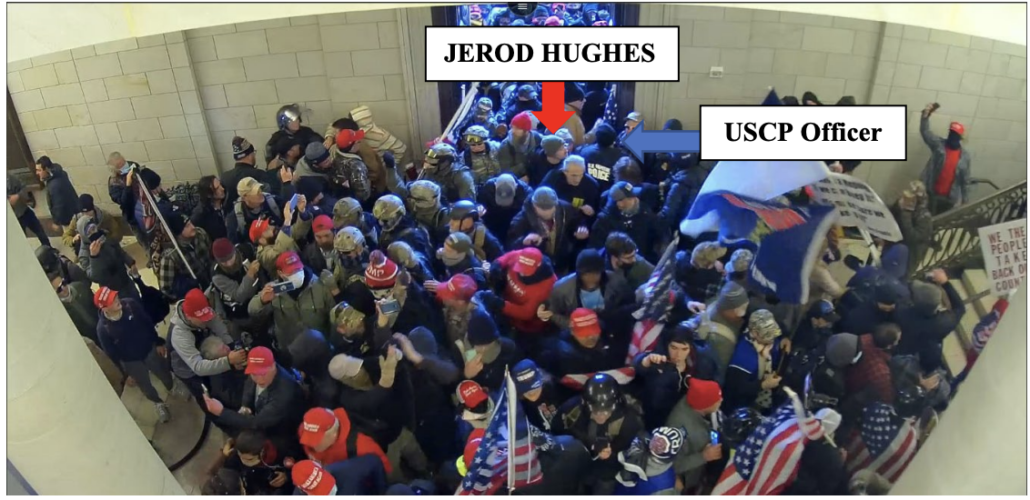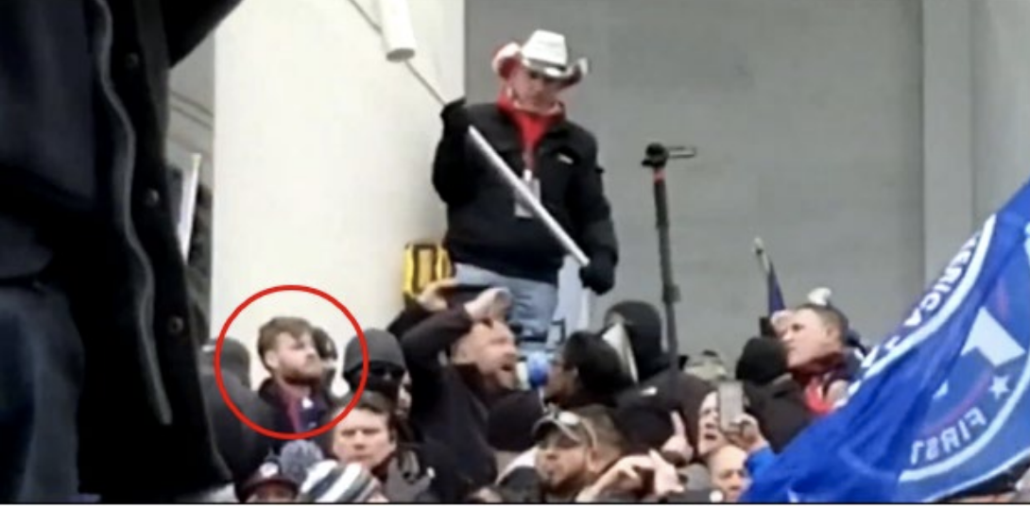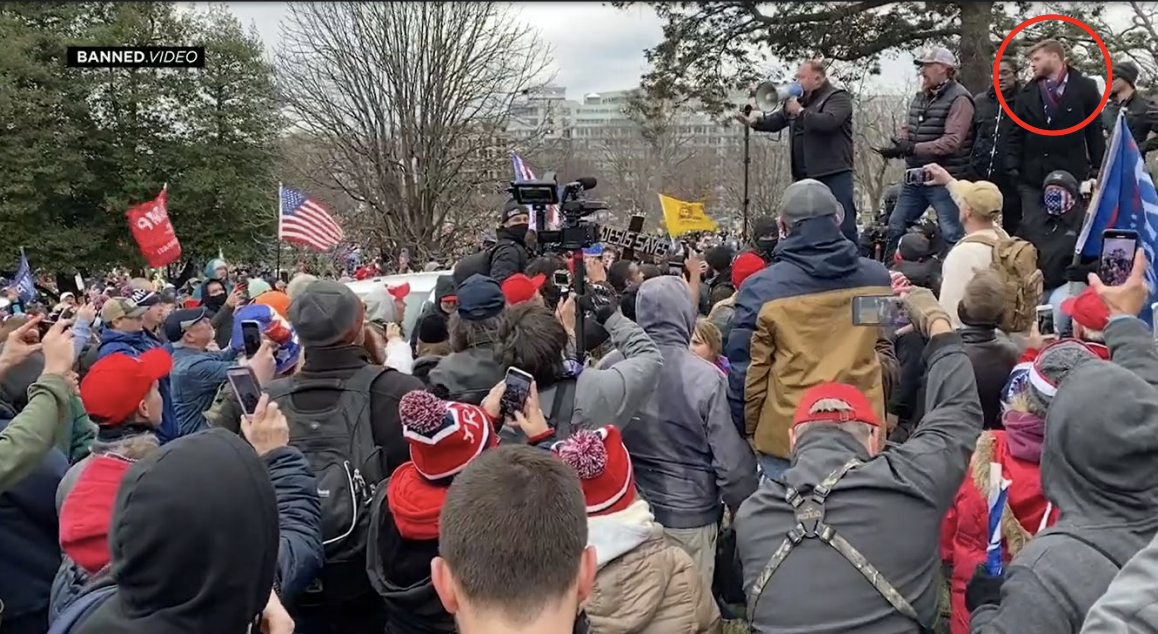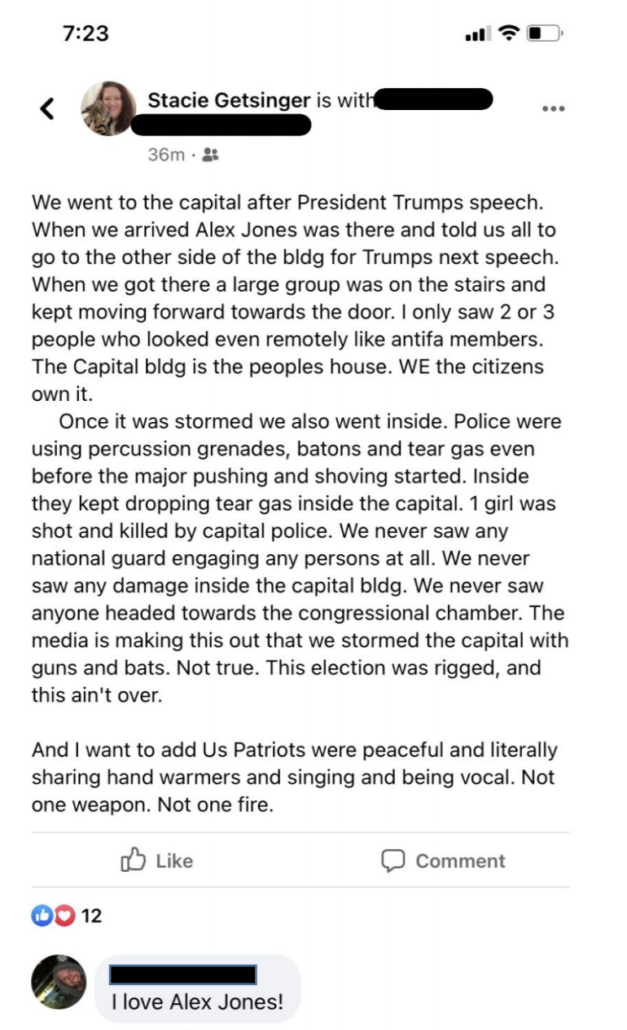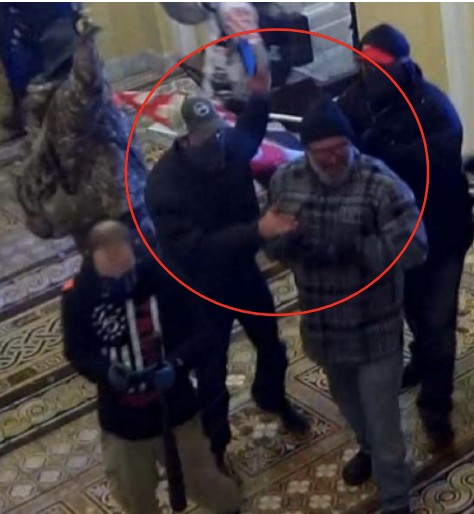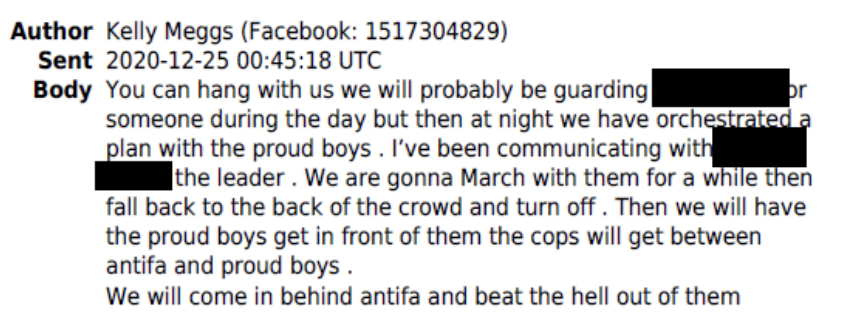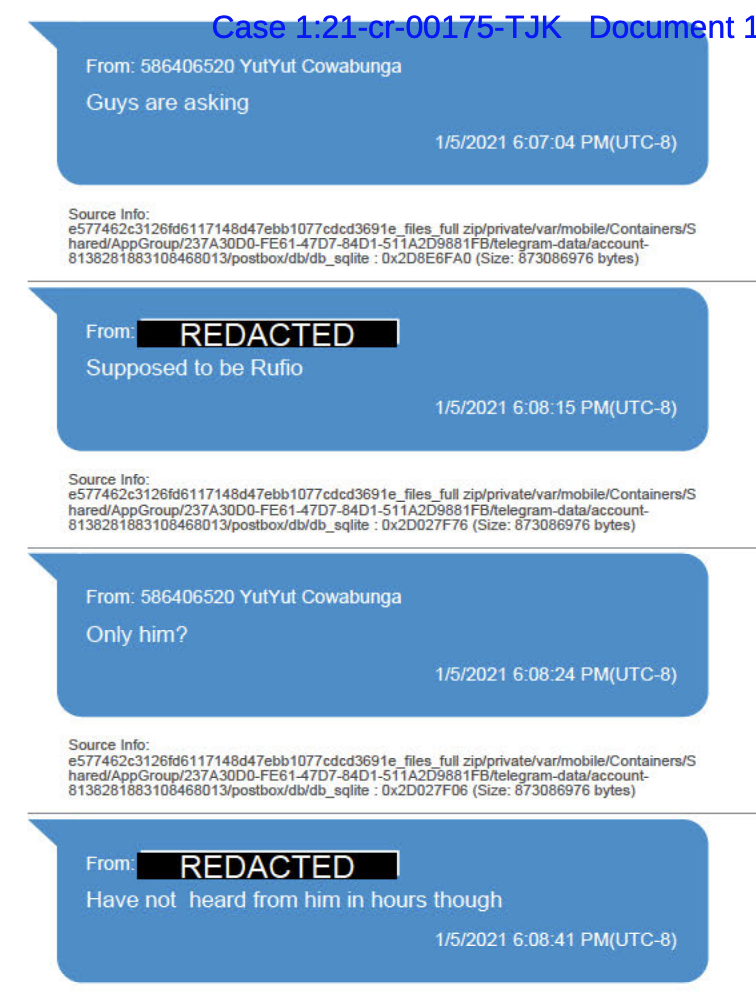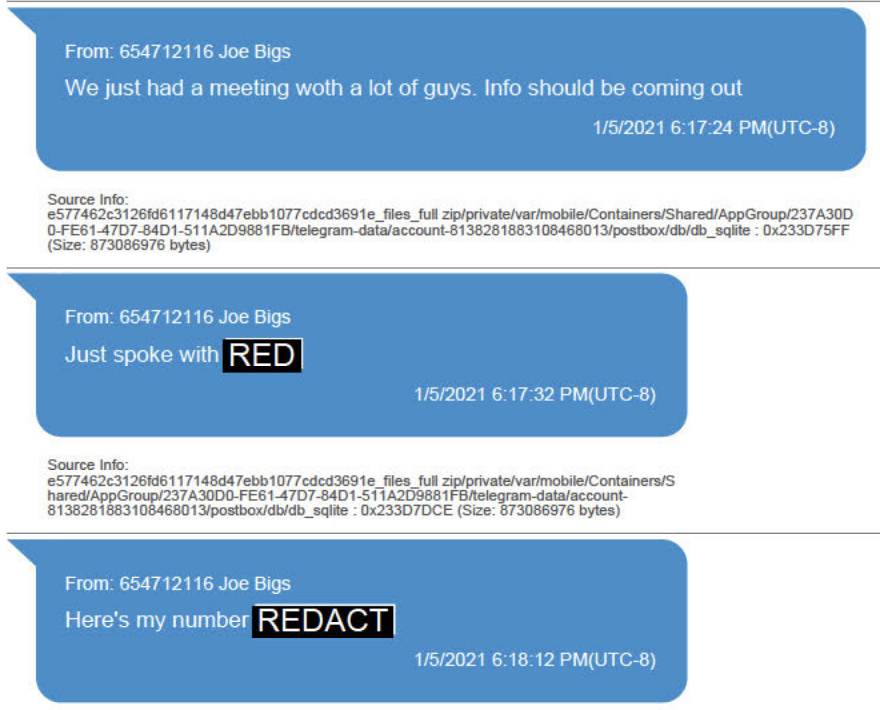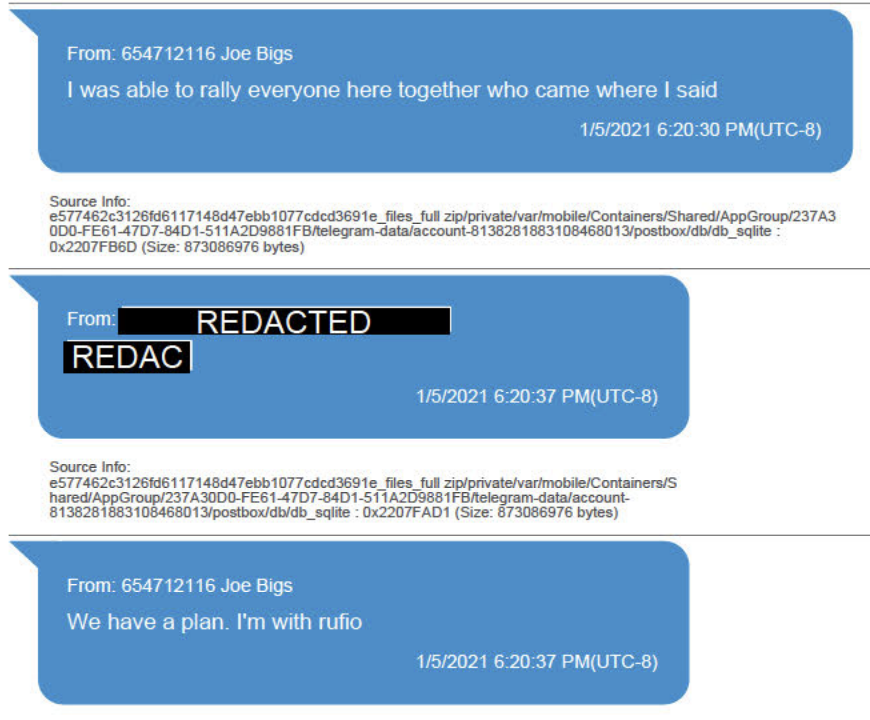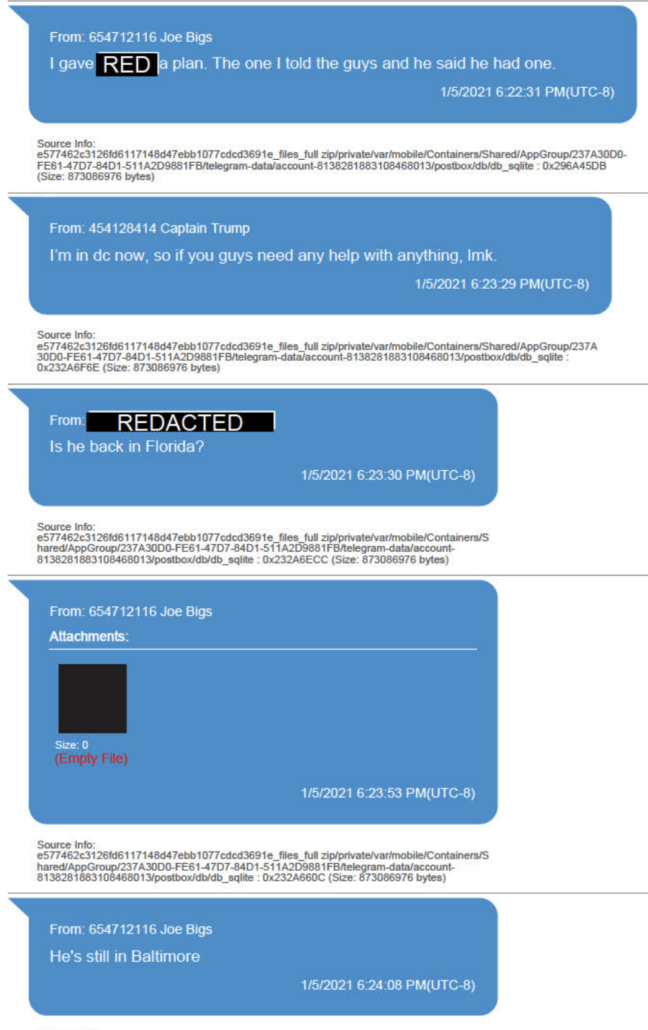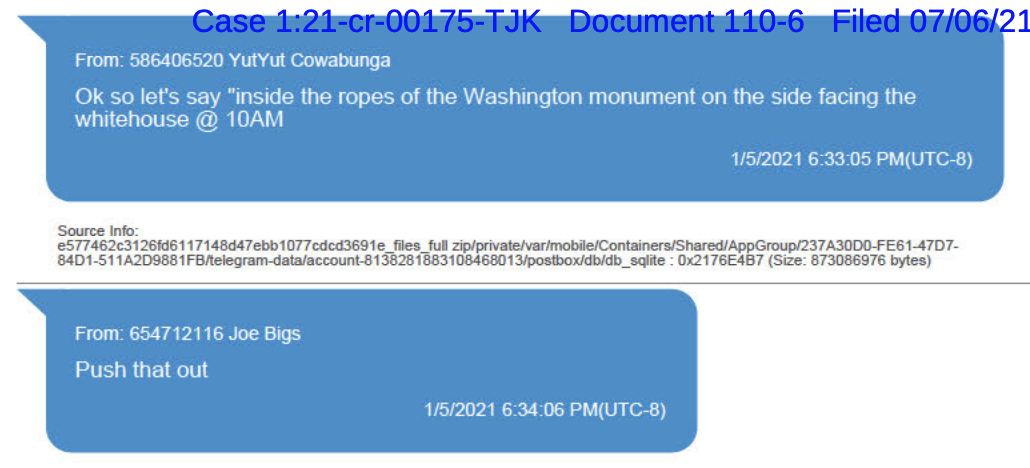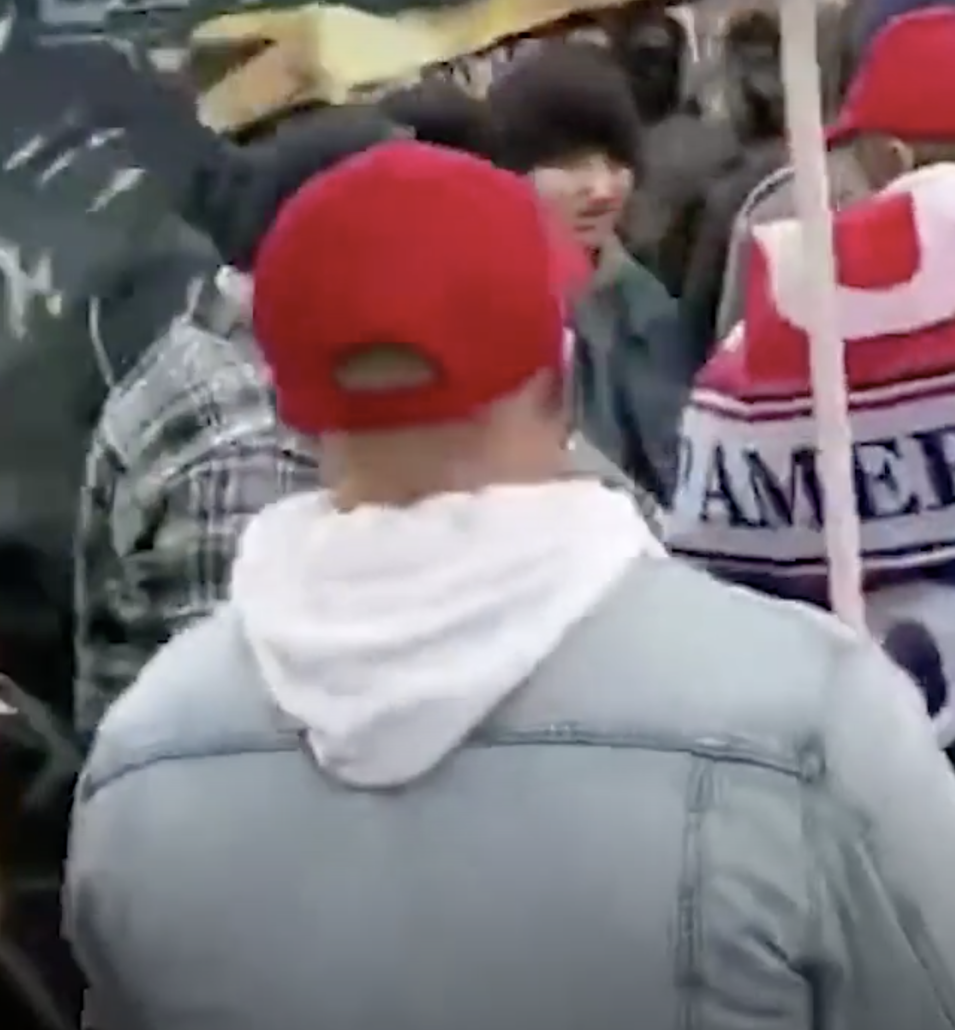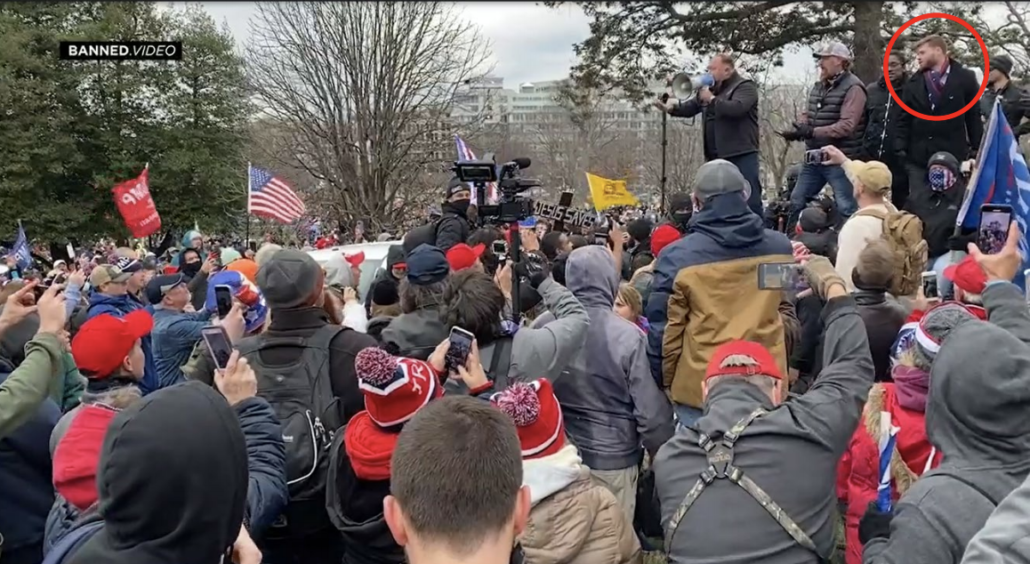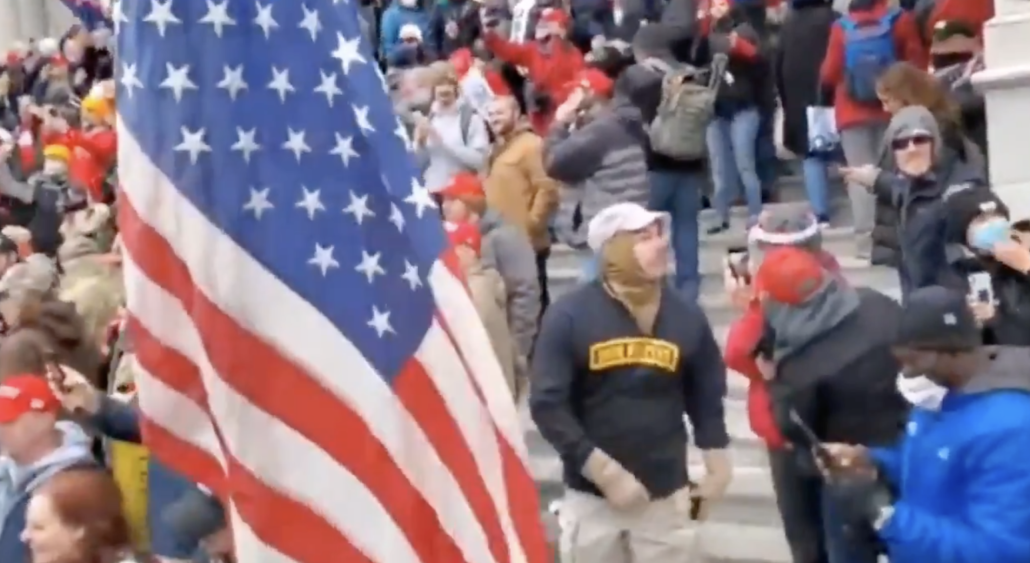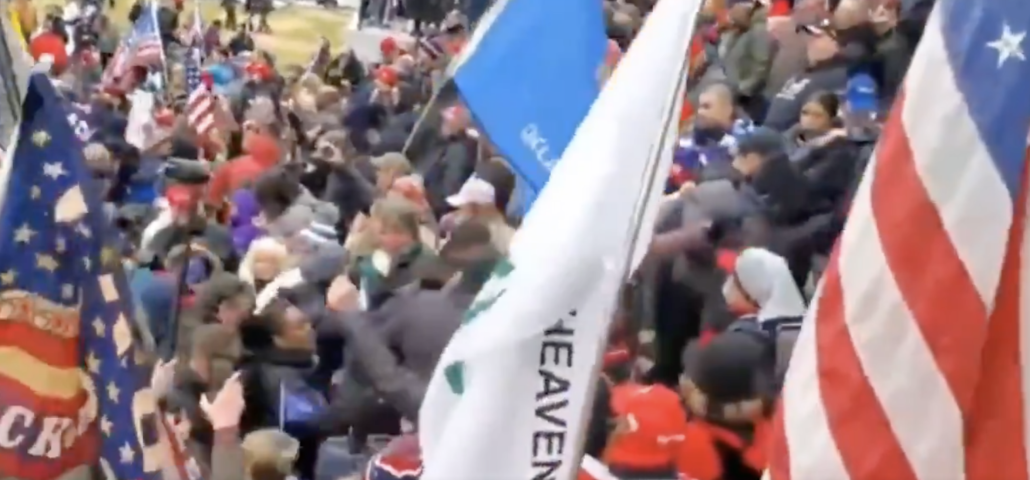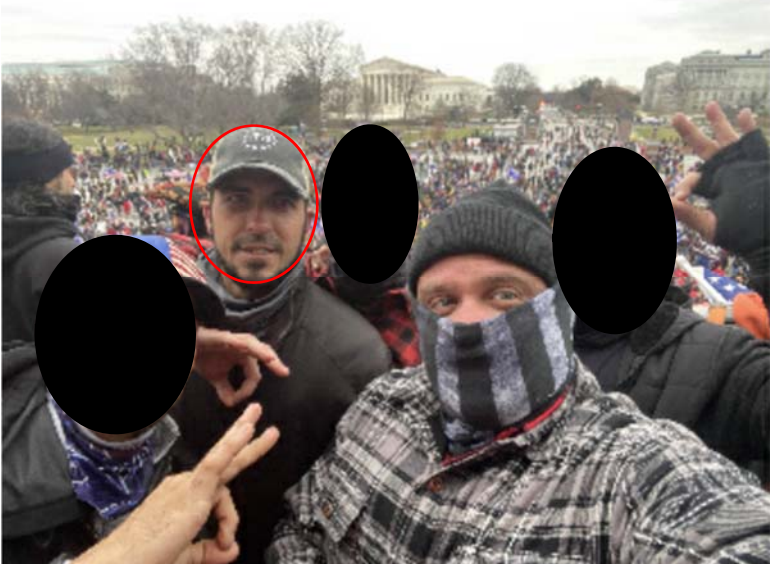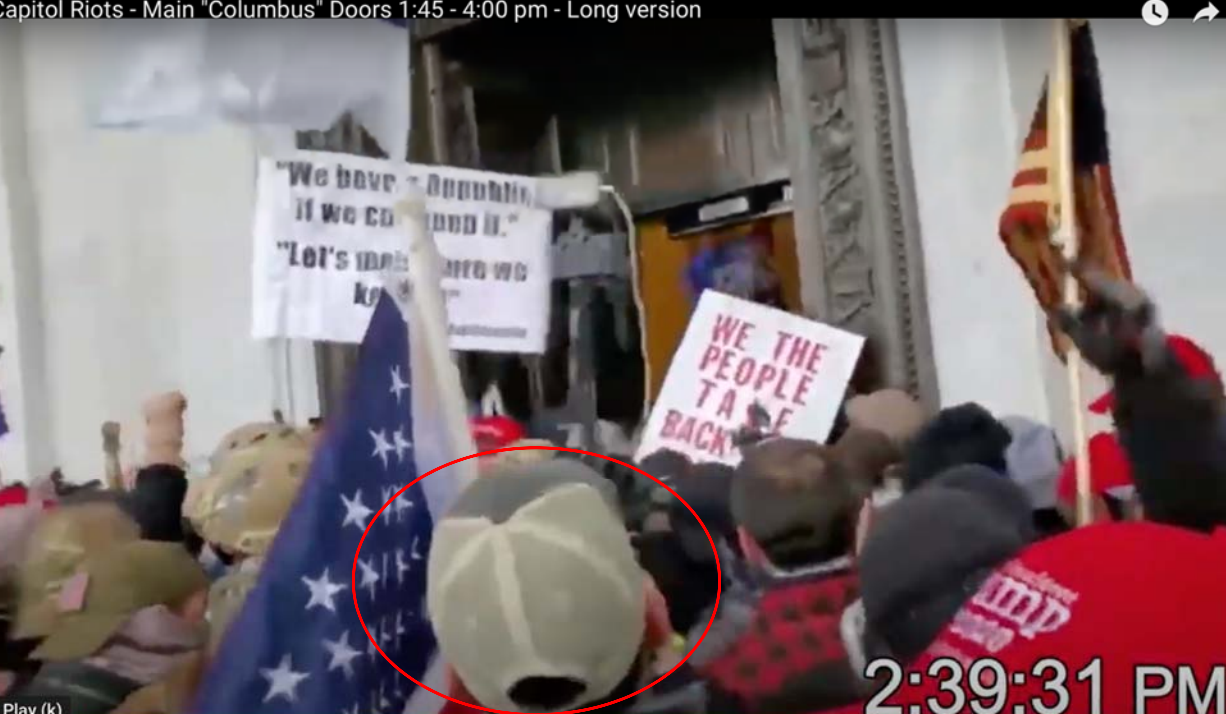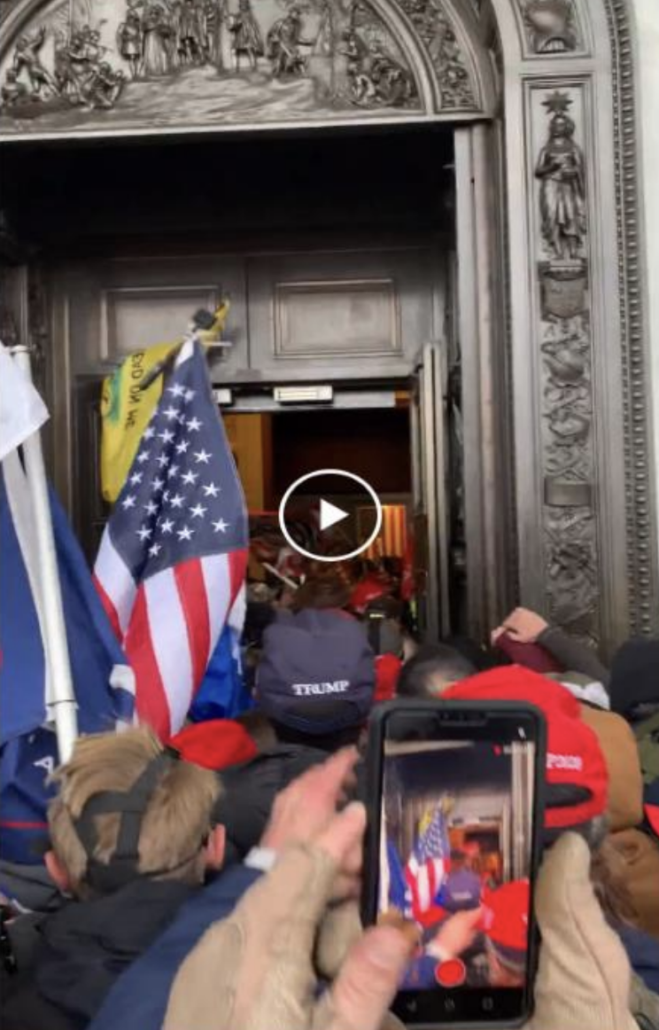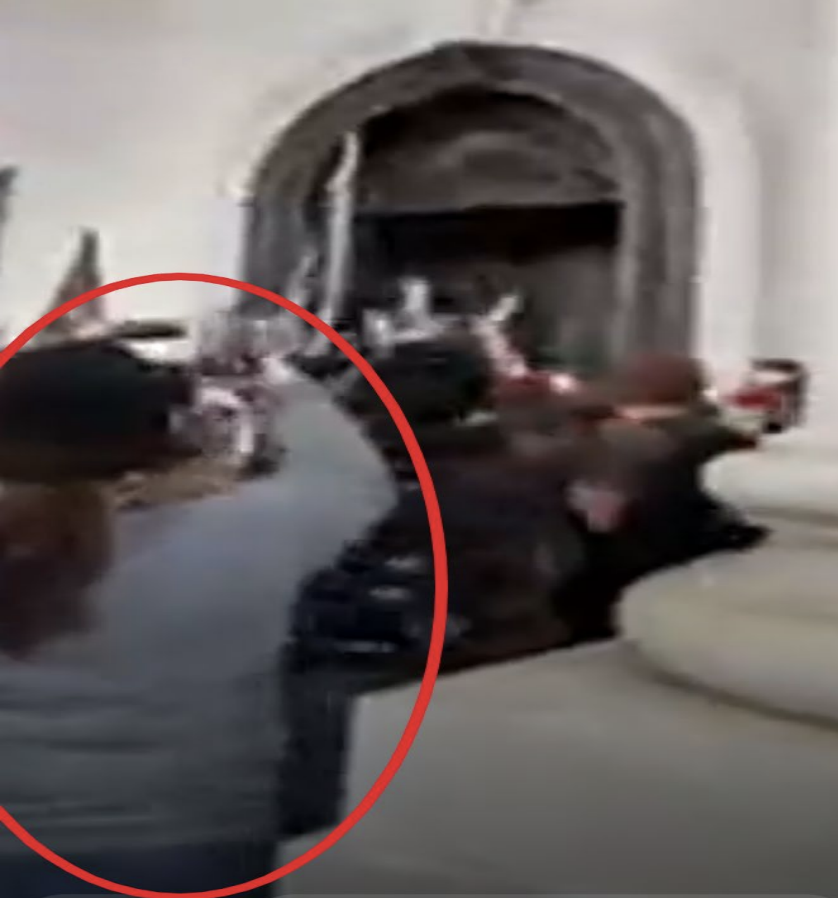Discovery Delays at the East Door: What Key January 6 Plea Negotiations Look Like
Lots of people have lost patience with the January 6 investigation based on misunderstandings about what it has discovered so far and where it may be heading. So I’d like to explain a delay that might tangibly hold up the investigation for two months: plea negotiations that might provide more information on the coordinated effort between the Proud Boys, Oath Keepers, Alex Jones, and an alarming number of Marines to breach the East front of the Capitol.
(Although who am I kidding? The people complaining don’t understand the investigation in this level of detail.)
When DOJ filed the existing superseding indictment charging the Proud Boy leaders last March, it made clear that the crowd of people assembled on the East steps before those doors were opened from the inside was of some interest, not least because we knew even then that Biggs and two other Proud Boys entered with the stack of Oath Keepers, which was led by Floridian Kelly Meggs, who had forged an alliance between Florida militia members in December 2020.
BIGGS subsequently exited the Capitol, and BIGGS and several Proud Boys posed for a picture at the top of the steps on the east side of the Capitol.
Thirty minutes after first entering the Capitol on the west side, BIGGS and two other members of the Proud boys, among others, forcibly re-entered the Capitol through the Columbus Doors on the east side of the Capitol, pushing past at least one law enforcement officer and entering the Capitol directly in front of a group of individuals affiliated with the Oath Keepers.
That is, this reference and others suggested there was coordination between two of the main militia groups involved in the attack.
I noted in April that the arrest of Florida Proud Boys Paul Rae and Arthur Jackman, two guys who followed Biggs everywhere he went that day, was likely an attempt to clarify how that assembly worked — an attempt that probably posed a risk for the two others included in a selfie Biggs and his co-travelers took from the top of the East steps.
The government arrested Rae on March 24. They arrested Jackman on March 30. Again, I’d be pretty nervous if I were one of the other two guys.
Those other two guys (actually there were three), Edward George and now-former Florida cops Kevin and Nathaniel Tuck, were arrested in July.
We’ve subsequently learned the inquiry into the East door is far vaster than that. The inquiry into how the East door got opened from the inside started at least by February; it figures prominently in Philip Grillo’s arrest affidavit. In May, DOJ arrested active duty Marine Chris Warnagiris for ensuring the East door stayed open once it had been breached. At the end of June, DOJ arrested Proud Boy Ricky Willden for his role in breaching the East side, without telling us what they knew about it. Also at the end of June, DOJ arrested Darrell Youngers and George Tenney; the former is a Marine, the latter is the guy who first opened the East door, before others like Grillo joined in. Leading up to Josiah Colt’s plea in July, DOJ likely learned more about how his co-conspirators, Nate DeGrave and Ronnie Sandlin, knew to head to the East door to fight with cops to keep it open. In September, the government revealed that Jerod and Joshua Hughes, brothers who were instrumental in helping to open the West door, who then occupied the Senate floor, had — like Biggs — exited the building and reentered via the East door breach along with the Oath Keepers.
Key arrests — those of Proud Boys Jimmy Haffner and Ron Loerhke — came in early December. Loerhke — another former Marine — played a significant role in focusing the mob on the West side of the building before he, along with Haffner, joined the others on the top of the East steps and allegedly helped break the police line to get in that East door. Just before Christmas, based on information discovered as late as October, DOJ added charges against the Johnson men, father Daryl and son Daniel, for their role in fighting to keep the East door open. Over the course of the year, then, DOJ has been charging many of those involved in the breach of the East door with felonies.
In August, DOJ started going after the Pied Pipers who brought extra bodies to the top of the stairs to fill the breach by arresting Alex Jones’ side-kick, Owen Shroyer. The judge presiding over the most important Proud Boys cases, Tim Kelly, is also currently considering Shroyer’s cover story for how he and Jones led mobs to the steps.
Along the way, DOJ also arrested MAGA tourists like the Getsingers, who attested that they followed Alex Jones’ lies all the way to the top of the East stairs only to push into the Capitol right along with the organized militias. They also arrested a bunch of people who took video footage that likely helps to clarify what happened there.
Over the course of a year, then, DOJ has slowly built up evidence of a coordinated assault, involving both major militia conspiracies and Trump’s designated Pied Piper, Alex Jones, largely orchestrated by former and one Active Duty Marines and one car salesman (Meggs), to open a second breach the Capitol.
We now know that it happened. What we’re waiting for is to learn how it happened: what kind of communications — and when — brought everyone to the East steps at the same time. Who knew about it, at the Capitol, or even down Pennsylvania Avenue?
In the wake of key decisions upholding DOJ’s application of obstruction to January 6, people from this crowd who might be able to offer more insight are reportedly considering pleading. For example, in a status hearing with the Hughes brothers on Friday, after Judge Tim Kelly orally rejected their challenge to DOJ’s obstruction application like he had done Ethan Nordean’s in December, both their attorneys talked like they were strongly considering a plea but just needed time to do their due diligence. If the Hughes were able to explain how they, with no discernible militia ties (though Jerod received travel funds from someone affiliated with a “Patriot” group), happened to be in all the most important places in the insurrection, it might be really useful for DOJ.
But it’s going to take two months for any kind of plea, cooperative or otherwise, to be negotiated, per the status hearing.
Similarly, at least some of Joe Biggs’ co-travelers are discussing a plea deal. In a joint status report for the men who posed with Joe Biggs on the East steps — Arthur Jackman and Paul Rae, who trailed Biggs all day on January 6, and Edward George, Kevin Tuck, and Nathaniel Tuck, the guys in the group arrested later — the parties asked for a two month continuance, citing discovery delays.
Second, since the last status conference in this case, the government has also produced six global productions, involving tens of thousands of files, to all Capitol Breach defendants. These productions have included, among many other things, thousands of files of U.S. Capitol Police Closed Circuit Video footage; over 1,000 files of body-worn camera footage; maps of the Capitol; reports of interviews and other information; and government work product aimed at assisting defense counsel in understanding the discovery in this investigation. Third, in this case in particular, the government produced on December 22, 2021 a significant quantity of cross-discovery that had been previously produced to defendants in the case of United States v. Ethan Nordean et al., No. 21-CR-175 (TJK).
The discovery process and negotiations with respect to a potential resolution of these cases are expected to continue past the first week of March.
Finally, the government and counsel for defendant Paul Rae note that a pretrial violation report was filed as to Mr. Rae on October 6, 2021. See Dkt. 68. This violation report stated that Mr. Rae was arrested for boating under the influence. Id. Mr. Rae’s BUI case is ongoing. Pretrial services is not recommending action at this point. Counsel for Mr. Rae notes that Mr. Rae was admonished for this incident, and states that there have been no further issues since that arrest. The government defers to the Court in terms of how it wishes to handle the violation report relating to Mr. Rae’s arrest. The government may affirmatively seek a change in Mr. Rae’s bond status or conditions if his ongoing BUI case results in a conviction.
Now, I’m skeptical that all five of these guys would plead guilty. I’m skeptical the three of them represented — with no conflict waver requested from DOJ — by John Pierce (Rae and the Tucks) would plead, because Pierce’s twin goals in representing an unsustainable number of January 6 defendants appears to be turning them into fundraising pawns and firewalling Joe Biggs. But obviously, the three prosecutors on this case believe two months might lead to plea deals where a hard deadline on any plea offer might not.
Generally, DOJ has required that militia defendants agree to cooperate with any plea. And while these five are not charged with conspiracy — they’re known mostly to have tagged along behind Biggs — they might be valuable witnesses to things DOJ might not otherwise have access to, such as Biggs’ side of phone conversations he had that day (there’s reason to believe, for example, he had calls with his former boss, Alex Jones).
Perhaps DOJ knows of some more cross-discovery that may make it worth their while to plead that will be coming in the days ahead.
Whatever it is, this selfie on the top of the East stairs is one small but seemingly significant detail in one of the tactically most important events of they day. And because of the very real delays in finalizing discovery in this case, this one won’t be resolved (if it is) before March. There’s no reason to believe DOJ could have done anything different to accelerate the process. The slow process is, in large part, due process overwhelmed by the difficulties of collecting all the evidence in this case.
I expect DOJ will continue to roll out new details about the breach at the East door in days ahead. Whether these men plead or not may not hold anything else up. They may be just five more bodies alleged to have worked to obstruct the peaceful transfer of power (two, George and Nathaniel Tuck are also accused of Civil Disorder; George is also accused of assault), along with two (the Hughes brothers) facing the possibility of terrorist enhancements for their role in obstructing the peaceful transfer of power.
But this is an example, however obscure, of the ways that the very due process we’re trying to uphold in preserving our democracy slows down the quick resolution that everyone is demanding.
Update: On Wednesday, lawyers for Youngers and Tenney indicated that they’d probably take a plea offer from the government. That case, too, has been continued two months.
Also yesterday, DOJ finally moved for a conflict review, almost six months after John Pierce filed his appearance for both the Tucks in that case.

